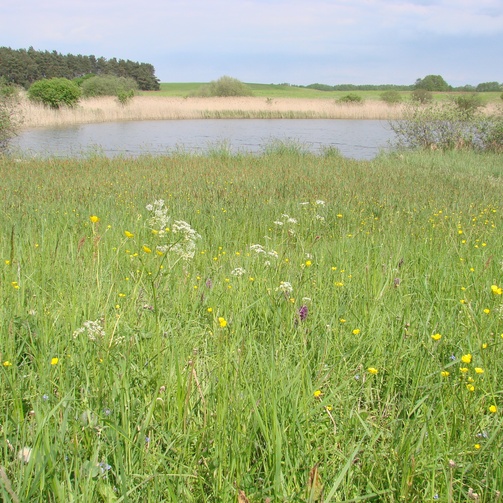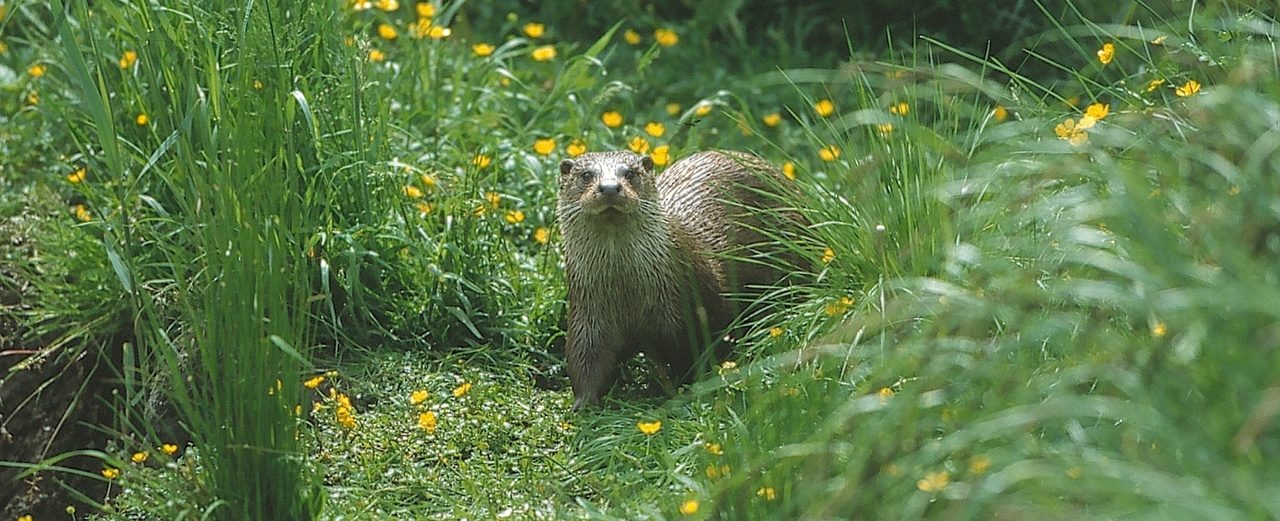 A home for the Eurasian otter
A home for the Eurasian otter
Together against the destruction of natural habitats
The Eurasian otter is one of the best swimmers among the predators that mostly live on land. But to swim and survive, it needs vast, clean waters rich in fish, with intact banks. A habitat that is becoming increasingly rare. As a result, the otter has been threatened with extinction in Germany in recent decades. Recently, stocks have recovered through targeted measures to protect otters. In Mecklenburg-Vorpommern, Brandenburg and Saxony in particular, it is increasingly re-establishing itself in a suitable habitat: It feels particularly at home in shallow rivers with overgrown banks, where it can hide and dig a den. Also, clean waters rich in fish are important so that the otters stay healthy and find enough food to feed their young. In Germany the otters are still listed on the Red List as an endangered species in spite of previous conservation efforts.
Necessity
Pristine banks and fish rich waters for protecting the otters.
Activity
The NABU Foundation buys land in the Biesenthal Basin on behalf of endangered species and protects it on a long-term basis.
Countable effort
Number of square metres bought and protected in the Biesenthal Basin.
Result
The conservation area is interconnected and the number of observed species and animal populations increases.
Systemic effect
The Biesenthal Basin and its ecosystems are protected long-term and contribute to preserving biodiversity.
Background
Urban sprawl and intensive agriculture with artificial fertilisers and pesticides are two of the main causes of the massive decline in animal and plant species in Germany in recent decades. Even in nature conservation areas, the specific usage rules generally permit intensive agriculture, forestry and fishing, resulting in negative consequences for species diversity. As a result of the lack of contiguous habitats, the dangers of road traffic and fishing, the otter was threatened with extinction. Massive conservation measures, especially in the eastern German federal states, have led to an increase in the population in these areas. The Biesenthal Basin is one of these natural habitats of the otter and, as part of the Barnim Nature Park, makes an important contribution to the conservation of this endangered species as well as many others. The permanent conservation of the Biesenthal Basin is therefore of great importance for protecting the otter.
The good deed
With today's good deed you make it possible to buy land in the Biesenthal Basin that is permanently protected. In this way a large, protected and contiguous natural environment can be created for endangered species such as the otter. The otters particularly benefit from the water-related measures implemented on the land: The banks of the water bodies remain undeveloped and unused. This allows trees to grow and their roots to provide solid banks and a natural home for otters. In addition, still waters, streams and bogs are preserved and, if necessary, restored and interconnected. In this way, wet meadows, water bodies and bogs in the area are also protected and larger contiguous areas are created, providing the otter with a larger habitat.

AboutGermany
Berlin
82,100,000
46,136
Placed 5 of 189
The fur of Eurasian otters is very dense. They have about 50,000 hairs per square centimetre, while we humans only have 120.
About the organization and further information
NABU-Stiftung Nationales Naturerbe
Website

Further information and source
- Weber, A. et al, 2015. Die Säugetiere der Fauna-Flora-Habitat-Richtlinie im Land Sachsen-Anhalt. Fischotter (Lutra Lutra L., 1758). Landesamt für Umweltschutz Sachsen-Anhalt. Halle.
- Reuther, C., 2002. Fischotterschutz in Deutschland. Grundlagen für einen nationalen Artenschutzplan. Verlag der GN-Gruppe Naturschutz. Hankensbüttel
- Ministerium für Umwelt, Naturschutz und Raumordnung, 1999. Artenschutzprogramm Elbebiber und Fischotter. Landesumweltamt Brandenburg
- Bundesamt für Naturschutz, 2019. Fischotter. Lutra Lutra:
- Neubert, F. / Wachlin, V.: Lutra lutra (Linnaeus, 1758), verändert nach Teubner & Teubner 2004, Landesamt für Umwelt, Naturschutz und Geologie.




